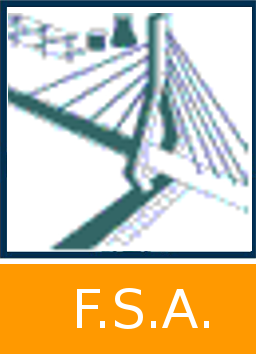Automation of an RFID tag writer for radiopharmaceutical applications
Taquet, Mathieu 
Promoteur(s) :
Redouté, Jean-Michel 
Date de soutenance : 24-jui-2021/25-jui-2021 • URL permanente : http://hdl.handle.net/2268.2/11597
Détails
| Titre : | Automation of an RFID tag writer for radiopharmaceutical applications |
| Titre traduit : | [fr] Automatisation d’un programmateur de tags RFID pour des applications radiopharmaceutiques |
| Auteur : | Taquet, Mathieu 
|
| Date de soutenance : | 24-jui-2021/25-jui-2021 |
| Promoteur(s) : | Redouté, Jean-Michel 
|
| Membre(s) du jury : | Vanderheyden, Benoît 
Vanderbemden, Philippe 
Patte, Michel |
| Langue : | Anglais |
| Nombre de pages : | 94 |
| Discipline(s) : | Ingénierie, informatique & technologie > Ingénierie électrique & électronique |
| Institution(s) : | Université de Liège, Liège, Belgique |
| Diplôme : | Master : ingénieur civil électricien, à finalité spécialisée en "electronic systems and devices" |
| Faculté : | Mémoires de la Faculté des Sciences appliquées |
Résumé
[en] This master’s thesis is aimed at developing a prototype of an automatized radio
frequency identification tag writer for the tags used to check if the integrated
fluidic processor of Ion Beam Application’s Synthera + is valid and hasn’t been
used more than once. This prototype is meant to give a proof of concept of the
system.
The first part of this work focuses on the mechanical development of the
prototype. The latter is aimed to separate and block the tags to program them
one by one and to sort them. The separation is achieved with a system made of
two ramps and a hatch. The immobilization and sorting are done with a cage
and a shaft both connected to a stepper motor. The different components of the
system were designed, 3D printed and assembled throughout this work.
The second part of this work focuses on the automation of the tag writer.
The different electrical components needed in this aim are introduced and their
choice is justified. The software and hardware architectures are then developed
to achieve synchronization with the tag programmer. This includes the design
of two PCBs to assemble the different components together and the low level
analysis of the micro-controller.
The different electrical components were then assembled on the structure developed
in the first part and tested. The prototype achieved the fixed objectives.
The next step is an industrialization that should be done in order to program the
tags asked by Ion Beam Application’s customers.
[fr] Ce travail de fin d’études a pour but de développer un prototype d’un système
automatisé d’écriture de tags identifiés par radio fréquence. Ces tags sont utilisés
pour vérifier si le processeur fluidique intégré de la Synthera + d’Ion Beam Application
est valide et n’a pas été utilisé plus d’une fois. Ce prototype est destiné
à démontrer la faisabilité de ce système.
La première partie de ce travail se concentre sur le développement mécanique
du prototype. Ce dernier vise à séparer et à bloquer les tags pour les programmer
un par un et les trier. La séparation est réalisée par un système composé de deux
rampes et d’une trappe. L’immobilisation et le tri sont réalisés par une cage et
un arbre. Cette cage et cet arbre ont chacun leur propre moteur pas à pas. Les
différents composants du système ont été conçus, imprimés en 3D et assemblés
au cours de ce travail.
La deuxième partie de ce travail se concentre sur l’automatisation du système.
Les différents composants électriques nécessaires à cet objectif sont présentés
et leur choix est justifié. Les architectures software et hardware sont ensuite
développées afin d’assurer la synchronisation avec le programmateur de tags.
Cela inclut la conception de deux circuits imprimés pour assembler les différents
composants ensemble et l’analyse de bas niveau du micro-contrôleur.
Les différents composants électriques ont ensuite été assemblés sur la structure
développée dans la première partie et testés. Le prototype a atteint les objectifs
fixés. La prochaine étape est une industrialisation qui devrait être faite afin de
programmer les tags demandés par les clients d’Ion Beam Application.
Fichier(s)
Document(s)
Annexe(s)

 TFE_Mathieu_Taquet_Video_Prototype.mp4
TFE_Mathieu_Taquet_Video_Prototype.mp4
Description: -
Taille: 69.58 MB
Format: Unknown
Citer ce mémoire
L'Université de Liège ne garantit pas la qualité scientifique de ces travaux d'étudiants ni l'exactitude de l'ensemble des informations qu'ils contiennent.


 Master Thesis Online
Master Thesis Online



 TFE_Mathieu_Taquet_Abstract.pdf
TFE_Mathieu_Taquet_Abstract.pdf
